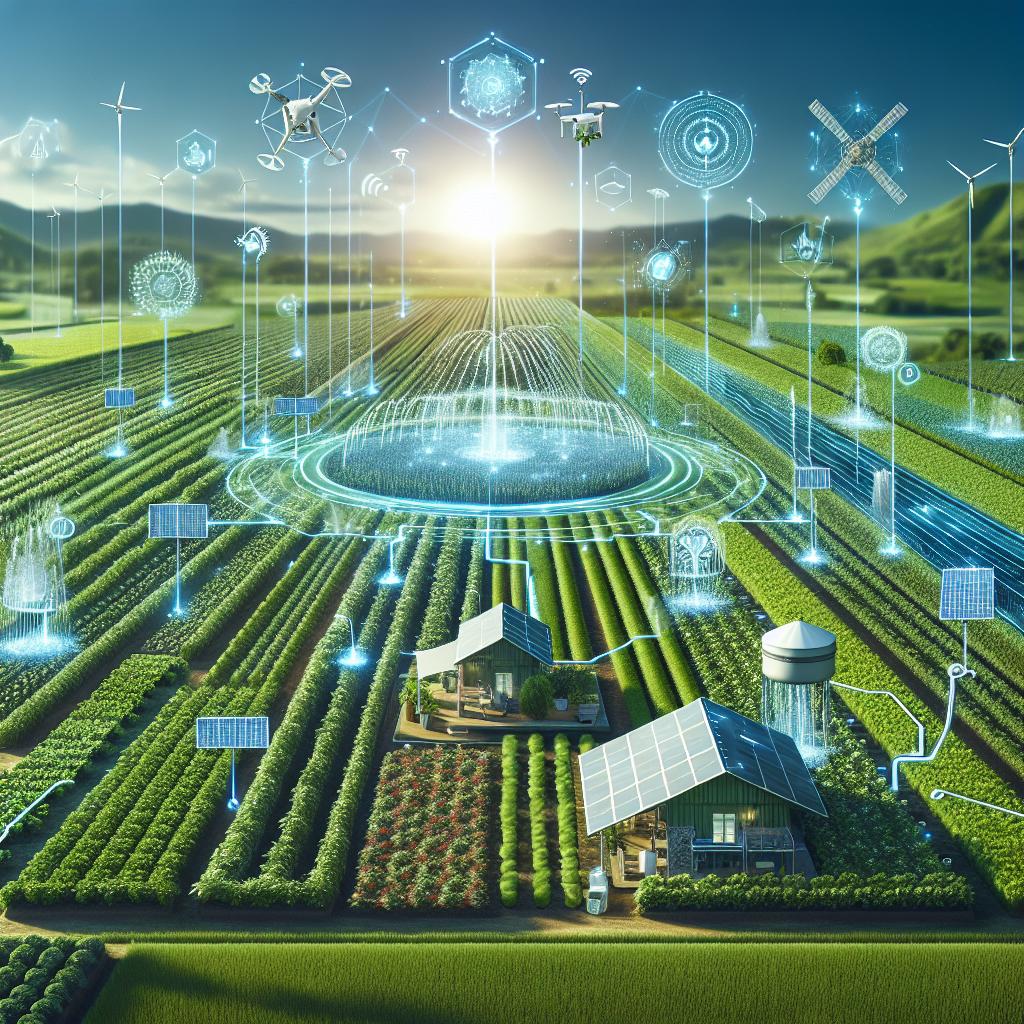This post may contain affiliate links which means I may receive a commission for purchases made through links. Learn more on my Private Policy page.
planning Your Irrigation System for Optimal Field Coverage: A Green Thumb’s Guide
When it comes to nurturing your crops and ensuring their robust growth, a well-planned irrigation system is your secret weapon. Imagine your fields—lush, vibrant, and brimming with life—each plant receiving just the right amount of water, no more and no less. This dream can become a reality with a little foresight and creativity in your irrigation planning. whether you’re a seasoned farmer or a weekend gardener, optimizing your field coverage can save you time, effort, and resources while promoting healthier plants. So, roll up your sleeves and grab your notepad! In this article, we’ll delve into the art and science of designing an irrigation system that’s as efficient as it is effective, guiding you step-by-step to cultivate a thriving green paradise right in your backyard. Let’s turn those water worries into a flowing success story!
designing Your Dream Irrigation Layout for Maximum Efficiency
Creating an irrigation layout that resonates with your vision involves a blend of strategy and creativity. Begin by assessing your field’s unique features, such as soil type, crop requirements, and elevation changes. This understanding allows you to categorize your irrigation zones according to the specific needs of each area. Consider implementing drip irrigation for more delicate crops,while using sprinklers for expansive areas that require broad coverage. Utilize these elements in tandem to harness the strengths of each system, ensuring that each plant receives adequate hydration without wastage.
Establishing a reliable water source is crucial, as it becomes the backbone of your irrigation system. When planning your layout, think about the integration of smart technology and automation options, such as soil moisture sensors and programmable timers. These tools can help monitor and control water flow, reducing labor and enhancing efficiency. To keep your system organized, create a visual map like the one below, outlining key components and their arrangements:
| Component | Function | Notes |
|---|---|---|
| Pumps | Transports water from source to fields | Choose energy-efficient options |
| Drip Lines | Delivers water directly to roots | Reduces water loss |
| Sprinklers | Covers larger areas uniformly | ideal for open fields |
| Valves | Controls water flow | Automatic is ideal for convenience |

Understanding Soil Types and Their Water needs
Soil types play a pivotal role in determining how much water your crops require and how effectively that water is retained. Understanding the characteristics of various soil types can enhance your irrigation planning. Here are a few common soil types and their water-holding capacities:
| Soil Type | Water-Holding Capacity | Ideal Crop Examples |
|---|---|---|
| Sandy Soil | Low | Carrots,Onions |
| Silty Soil | Moderate | Leafy Greens,Peas |
| Clay Soil | High | Rice,Potatoes |
| Loamy soil | Balanced | Tomatoes,Corn |
When designing your irrigation system,consider the specific water needs of your crops based on their growing medium. For exmaple, sandy soils need more frequent, but lighter watering sessions due to their speedy drainage, while clay soils can benefit from deeper initial watering to ensure moisture reaches the roots effectively. Utilizing soil moisture sensors and drip irrigation can significantly optimize water usage,ensuring each type of soil receives just the right amount of hydration to support healthy growth.

Choosing the Right Technology: Drip, Sprinkler, or Surface Irrigation
When it comes to selecting the optimal irrigation technology for your agricultural needs, understanding the strengths and weaknesses of each system is crucial. Drip irrigation, known for its efficiency, delivers water directly to the plant roots, minimizing evaporation and runoff. This method is brilliant for areas with limited water resources and can significantly enhance crop yield. On the other hand, sprinkler systems mimic natural rainfall and are perfect for larger fields, providing even coverage and versatility in water request. They can be installed permanently or set up as portable units, catering to various crop types and field shapes. surface irrigation is a more traditional approach, where water is allowed to flow over the fields by gravity. It’s easier to implement and maintain but may not be suitable for all crops due to its dependence on the land’s topography and soil type.
To help you make an informed decision, consider these factors when choosing the right technology for your irrigation system:
- Water Availability: Assess the local water supply and your crop’s water needs.
- Crop Type: Different crops have varied requirements; choose an irrigation method that aligns with these needs.
- Field Size and Topography: Large,uneven fields might benefit more from sprinklers,while smaller,flat areas could suit drip or surface systems.
- Budget: Analyze both upfront and ongoing costs to find a system that fits your financial constraints.
| irrigation type | advantages | Disadvantages |
|---|---|---|
| Drip Irrigation | Efficient water use,reduced weeds,low evaporation | Higher initial cost,needs regular maintenance |
| Sprinkler Irrigation | Versatile,suitable for various crops,easy installation | Can lead to water loss from evaporation,uniformity issues |
| Surface Irrigation | Low cost,minimal technology required | Less efficient,potential for uneven distribution |

Maintenance tips to Keep Your System Running Smoothly
Keeping your irrigation system in peak condition requires ongoing attention and care. Regularly check for leaks and blockages to ensure that water flows efficiently throughout your system. Schedule seasonal inspections to assess the condition of pipes,valves,and sprinkler heads. Make use of a maintenance checklist to help you remember crucial tasks, such as:
- Cleaning filters and screens
- Inspecting pressure regulators
- Monitoring for signs of wear or corrosion
Another key aspect of maintenance is proper scheduling. adjust watering times based on seasonal whether changes, and consider utilizing smart irrigation technology for optimal efficiency. Keep track of rainfall and soil moisture levels to avoid overwatering. Reviewing your system’s performance on a regular basis can lead to long-term savings and healthier fields. Creating a simple maintenance log can also help you stay organized:
| Date | Task | Status |
|---|---|---|
| March 10 | Checked for leaks | All clear |
| April 15 | Cleaned filters | Completed |
| May 22 | Adjusted timers | Done |
To Wrap It Up
As we wrap up our journey through the ins and outs of planning your irrigation system for optimal field coverage, remember that a well-crafted irrigation plan is more than just rows of pipes and sprinklers—it’s the lifeblood of your crops and a tapestry of innovation woven into the fabric of lasting farming. Whether you’re nurturing a humble garden or managing expansive fields, the right system can definitely help ensure that every plant gets the love and hydration it needs to thrive.
So,as you roll up your sleeves and begin this exciting project,keep these principles and tips in your toolkit: assess your landscape,choose your system wisely,and don’t shy away from a little trial and error. After all, every drop counts, and with a little planning and a splash of creativity, you can cultivate a flourishing oasis that not only nourishes your plants but also respects our precious resources.
Happy watering,and may your fields be ever lush and bountiful! Until next time,here’s to turning your irrigation dreams into lush realities!
This post may contain affiliate links which means I may receive a commission for purchases made through links. Learn more on my Private Policy page.

